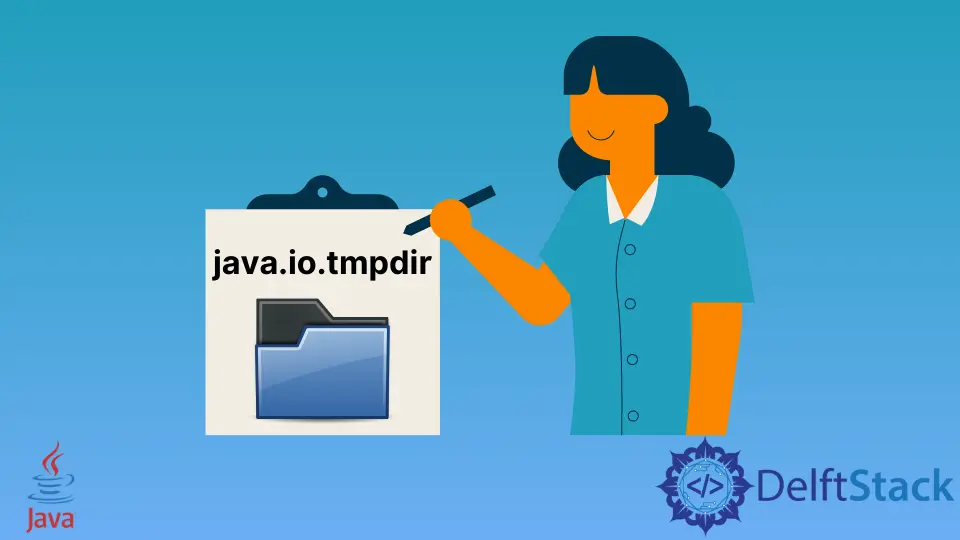How to Set Environment Variable to Control java.io.tmpdir
- Understanding java.io.tmpdir
- Setting java.io.tmpdir in Git Bash
- Setting java.io.tmpdir in Windows Command Prompt
- Setting java.io.tmpdir in Linux
- Conclusion
- FAQ

Setting the right environment variables is crucial for optimizing Java applications, especially when it comes to managing temporary files. One such variable, java.io.tmpdir, determines the directory where Java stores temporary files.
This article will guide you through the process of setting this environment variable effectively. By controlling the java.io.tmpdir, you can enhance performance, manage disk space, and ensure that your Java applications run smoothly. Whether you’re a seasoned developer or just starting, understanding how to configure this variable can make a significant difference in your application’s behavior. Let’s dive into the methods to set the java.io.tmpdir environment variable.
Understanding java.io.tmpdir
Before we jump into the methods of setting the java.io.tmpdir, it’s essential to understand what this variable does. In Java, temporary files are often created for various purposes, such as caching data or storing intermediate results. By default, Java uses the system’s default temporary directory, which may not always be optimal for your application needs. By configuring java.io.tmpdir, you can specify a custom location for these temporary files, allowing for better organization and management of your application’s resources.
Setting java.io.tmpdir in Git Bash
If you are using Git Bash, setting the java.io.tmpdir environment variable is straightforward. You can do this by exporting the variable in your terminal session or adding it to your profile configuration file. Here’s how you can do it:
export JAVA_OPTS="-Djava.io.tmpdir=/path/to/your/tmpdir"
Replace /path/to/your/tmpdir with the actual path where you want Java to store temporary files. This command sets the JAVA_OPTS variable, which includes the java.io.tmpdir setting.
Output:
Environment variable set successfully
When you run this command, it will configure the Java temporary directory for the current terminal session. If you want to make this change permanent, you can add the same line to your .bashrc or .bash_profile file in your home directory. This way, every time you open a new terminal session, the variable will be set automatically.
To apply the changes in your current session, you can source the file:
source ~/.bashrc
Output:
Profile updated and changes applied
This method ensures that your Java applications always use the specified temporary directory, helping you manage temporary files more effectively.
Setting java.io.tmpdir in Windows Command Prompt
If you are working on a Windows machine, setting the java.io.tmpdir environment variable can be done through the Command Prompt. Here’s how:
set JAVA_OPTS=-Djava.io.tmpdir=C:\path\to\your\tmpdir
Make sure to replace C:\path\to\your\tmpdir with your desired path. This command temporarily sets the JAVA_OPTS variable for the current Command Prompt session.
Output:
Environment variable set for the session
It’s important to note that this setting will only last for the duration of your Command Prompt session. To make it permanent, you can set it through the System Properties:
- Right-click on ‘This PC’ or ‘Computer’ on your desktop or in File Explorer.
- Select ‘Properties.’
- Click on ‘Advanced system settings.’
- In the System Properties window, click on ‘Environment Variables.’
- Under ‘System variables,’ click ‘New’ and enter
JAVA_OPTSas the variable name and-Djava.io.tmpdir=C:\path\to\your\tmpdiras the variable value. - Click OK and apply the changes.
Once set, any Java application executed after this will use the specified temporary directory, allowing for better control over temporary file storage.
Setting java.io.tmpdir in Linux
For Linux users, setting the java.io.tmpdir environment variable can be done in a similar manner as in Git Bash. Here’s how:
export JAVA_OPTS="-Djava.io.tmpdir=/path/to/your/tmpdir"
Replace /path/to/your/tmpdir with the desired path for your temporary files. This command sets the JAVA_OPTS variable for the current session.
Output:
Environment variable set for the session
To make this change permanent, you can add the export command to your shell’s configuration file, such as .bashrc or .bash_profile. After adding the command, apply the changes by sourcing the file:
source ~/.bashrc
Output:
Profile updated and changes applied
This method ensures that your Java applications consistently use the specified temporary directory, optimizing performance and file management.
Conclusion
Setting the java.io.tmpdir environment variable is a simple yet effective way to manage temporary files in Java applications. Whether you are using Git Bash, Windows Command Prompt, or Linux, the methods outlined in this article will help you configure this variable to suit your needs. By directing Java to a specific directory for temporary files, you can improve application performance and maintain better organization of your system resources. Remember to choose a location that is easily accessible and has sufficient disk space to accommodate temporary files.
FAQ
-
What is java.io.tmpdir?
java.io.tmpdir is an environment variable in Java that specifies the directory where temporary files are stored. -
How do I check the current value of java.io.tmpdir?
You can check the value of java.io.tmpdir by runningSystem.getProperty("java.io.tmpdir")in a Java program. -
Can I set java.io.tmpdir to a network drive?
Yes, you can set java.io.tmpdir to a network drive, but ensure that the network path is accessible and has the necessary permissions. -
Is it safe to delete files in the java.io.tmpdir?
Generally, yes. Files in the java.io.tmpdir are temporary and can be deleted, but ensure that no running processes are using them. -
Will changing java.io.tmpdir affect all Java applications?
Yes, changing the java.io.tmpdir environment variable will affect all Java applications running in the same environment.
I have been working as a Flutter app developer for a year now. Firebase and SQLite have been crucial in the development of my android apps. I have experience with C#, Windows Form Based C#, C, Java, PHP on WampServer, and HTML/CSS on MYSQL, and I have authored articles on their theory and issue solving. I'm a senior in an undergraduate program for a bachelor's degree in Information Technology.
LinkedIn